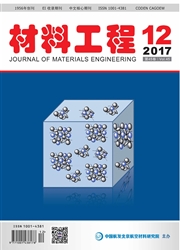

 中文摘要:
中文摘要:
通过人工海水中长期浸泡实验和循环伏安极化曲线测试,研究了温度、Cl-浓度、溶解氧浓度对抛光后的316L不锈钢点蚀形核的影响,确定了不锈钢在不同环境的人工海水中点蚀的萌生时间和位置.结果表明:与温度和Cl-浓度的影响不同,溶解氧浓度的增加对不锈钢点蚀形核具有抑制作用.316L不锈钢在4℃,8×10-6溶解氧浓度,10%(质量分数)NaCl溶液中浸泡后表面出现钝化膜局部破坏,点蚀形核时间为60~70天,形核位置存在MgO-Al2O3系和CaO-SiO2系非金属夹杂物.不锈钢在4℃人工海水和0.02×10-6溶氧量浓度下浸泡后,表面出现点蚀的时间为70~80天.
 英文摘要:
英文摘要:
Effect of temperature, concentration of chloride ion and dissolved oxygen concentration on pitting nucleation of polished 316L stainless steel was investigated using long-term immersing experiment and cyclic potentiodynamic polarization curves. Pitting initiated time and location in different artificial sea water environments were determined. The results show that pitting nucleation can be inhibited with increasing dissolved oxygen concentration, which is different from effect of temperature and chloride ion. For 316L stainless steel, after immersed in 10% (mass fraction) NaCl solution with 8× 10 6 dissolved oxygen concentration at 4℃, local destroy occurs on the surface passive film, pitting nucleation time is 60-70 days, and MgO-Al2O3 series and CaO-SiO2 oxide series non-metal inclusions exist at the pitting nucleation sites. After immersed in artificial sea water at 4℃, and with 0.02 × 10 ^-6 dissolved oxygen concentration, the time for pitting corrosion appears on the surface of 316 stainless steel is 70-80 days.
 同期刊论文项目
同期刊论文项目
 同项目期刊论文
同项目期刊论文
 期刊信息
期刊信息
